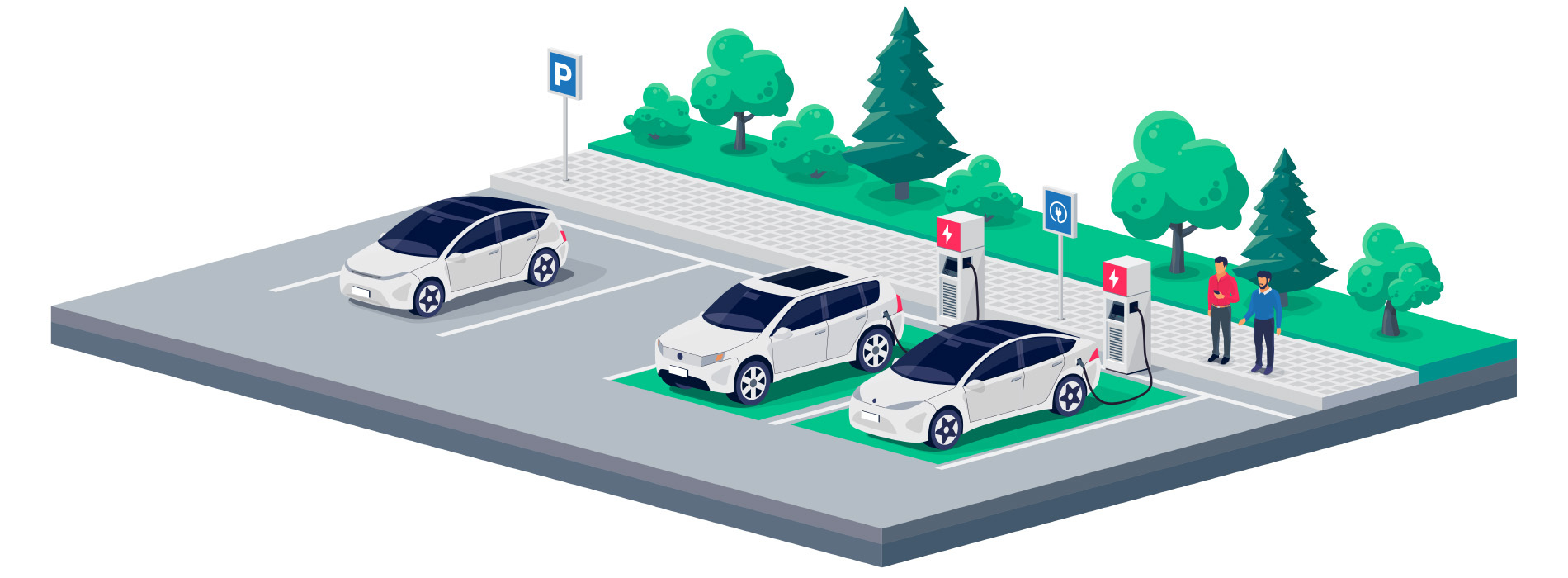EV Market Slowed by the Utility Data Disconnect

Owners and prospective buyers of electric vehicles (EVs) hope to see more public places to rapidly charge their vehicles thanks to billions of dollars in federal and state charger incentive programs. But EV fast charger installation can face lengthy delays due to the lack of accessible data about locations on the power grid that can handle the added load.
The first step of any EV charging project is to find suitable charger locations based on the project’s goals. This involves evaluating a location’s likely amount of EV traffic and the surrounding demographic and equity characteristics using software such as CSE’s Caret EV Infrastructure Planner.
Knowledge of utility capacity would help to choose optimal EV charging sites
However, not all suitable charging sites can become operational in a reasonable time frame due to grid constraints. Offering DC fast charging services requires an intense amount of power per location, such as the 600 kilowatts (kW) needed to host four 150-kW DC fast chargers for sites to be eligible for federal funding from the Infrastructure Investment and Jobs Act.
To ensure faster installation of EV charging, potential roadblocks need to be addressed, such as:
- Many properties and the distribution grid’s transformers, main lines and feeder lines that connect to them do not have nearly enough capacity to add sizeable EV charging loads.
- Once a site is determined, there is often a lengthy back-and-forth process with utilities to understand the interconnection requirements and provide permits, utility design plans and other documentation, before receiving approval for the site.
- If a capacity upgrade is required, it can take up to a year or longer to have the project approved and for the utility to complete the network capacity upgrade so that the EV charger installation process can even begin.
This lengthy process and increasing costs due to inflation can cause potential EV charging site hosts to give up on their incentive applications, thus delaying the construction of the infrastructure needed to keep up with the demand from soaring EV sales and the two million EV drivers in the U.S.
Sharing utility data, avoiding capacity upgrades are key to faster EV charging deployment
Many utility companies have been reticent to publicly share the network distribution maps that would accelerate site selection due to security, confidentiality and the cost of maintaining the maps. The recent wave of vandalism at substations sadly only reinforces this argument.
Some utilities are willing to share at least partial data about their network capacity, including Con Edison in New York and San Diego Gas & Electric, which requires user registration to view the data. While making the data available to the general public may be deemed too risky, providing access to only relevant parties, such as the charging network operators, property management companies, convenience stores and other potential site hosts would remove the most time-consuming obstacle in getting chargers in the ground. Being able to consider this utility data upfront as a factor in site selection would simplify and accelerate the identification of feasible locations for electric vehicle supply equipment (EVSE).
The U.S. Department of Transportation recognizes the role that utilities must play in enabling EV charging infrastructure: “Some coordination with the local utility is necessary in almost all charging station installations, and a need for deeper coordination is even more likely in rural areas, where the infrastructure may be less robust and high-capacity EVSE installations are more likely to require upgrades to electrical service.”
Sharing distribution capacity data with site developers is the utility engagement needed to unlock interest and efficiency in expanding EV charging networks.
Locations that add a solar array and stationary battery storage (incentives are often available for each) while tightly managing the chargers’ power delivery might be able to avoid these upgrades. Access to grid capacity data would also be helpful in appropriately scaling these distributed energy resource projects to meet charging demand while reducing the impact on grid operations.


